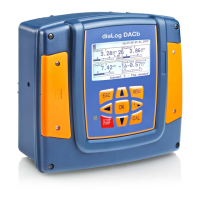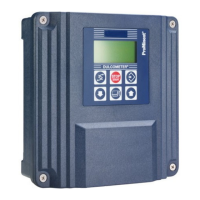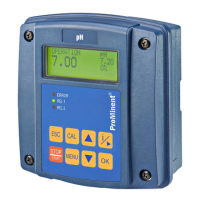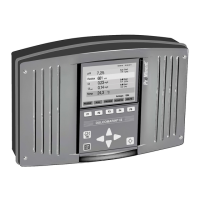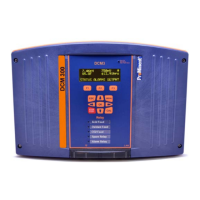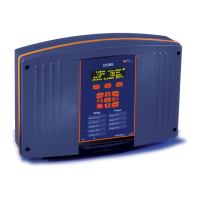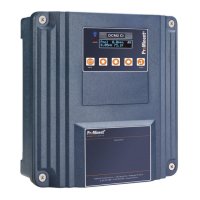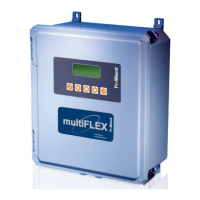lated chlorine value does not change the effec‐
tive disinfection effect in the water.
Nevertheless, the aforementioned overdosing
is avoided. The recognised reference method
DPD 1 (for free chlorine) is used as a compar‐
ison method to calibrate the amperometric sen‐
sors. The reference method is pH-independent
(or buffers the pH value to 6.5) and therefore
determines the free chlorine nearly completely
as 100% HOCl. The pH influence on the
chlorine value measured by the sensor can be
compensated by the controller so that the con‐
centration value measured by the ampero‐
metric chlorine measuring system corresponds
to this free chlorine value. The controller can
carry out this compensation automatically either
using an integrated pH measurement or man‐
ually relative to a fixed pH value. We recom‐
mend the automatic version. Here it is also
essential to measure the sample water tem‐
perature, as it has a significant influence on the
pH measurement. If this influence were not to
be compensated, then the pH value would not
be measured accurately and then the chlorine
value would be incorrectly compensated.
No calibration is possible at high pH values
without pH compensation, because the differ‐
ence between the measurement with the
chlorine sensor and the comparison DPD 1 ref‐
erence method is too great.
The working range of the pH compensation: pH
4.00 ... 8.50, Temperature: 5 ... 45 °C
Measurement of dissolved oxygen: You need to
enter the following correction variables in the
event of exacting requirements relating to
measuring accuracy (see specification of
sensor types): Air pressure, Higher than NNl,
Salinity or Conductivity. The temperature cor‐
rection variable is already corrected in the
sensor with sensor types DO1, DO2 and DO3.
If you switch the temperature to “OFF” for these
sensor types, then you need to update the
values of the correction variable at least prior to
each calibration.
Calibration of the chlorine sensor
with active pH compensation
It is mandatory that you always cali‐
brate the pH sensor first and only then
the chlorine sensor. Whenever the pH
sensor is calibrated in future, the
chlorine sensor always needs to be
calibrated afterwards. Otherwise the
chlorine measurement will be incorrect.
Sensor type:
First select the sensor type. The sensor type is
given on the sensor nameplate. This sensor
selection is necessary and activates the
sensor-specific data in the controller.
Measuring range of the sensors
Select the measuring range. The measuring
range is given on the sensor nameplate. An
incorrect measuring range leads to an incorrect
measurement.
Temperature
The temperature measurement is used only for
information and recording purposes, but not for
temperature compensation. Temperature com‐
pensation is performed in the sensor. If the
measured variable
[Chlorine dioxide]
and the
[CDP]
type of sensor have been selected, then
a separate temperature measurement is
needed for temperature compensation.
Configuring measured variables
74
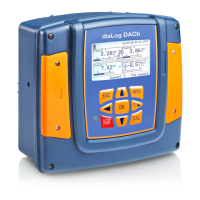
